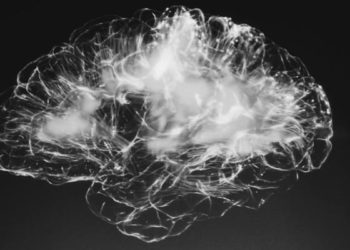Wellness Check: Spirituality
The influence of body-mind-spirit interventions on well-being may be poorly understood
1. Few studies included all concepts of the Body-Mind-Spirit (BMS), including detailed descriptions of the intervention, and showed effectiveness in holistic outcomes.
2. Only three included studies were considered high quality.
Evidence Rating Level: 1 (Excellent)
BMS is a treatment method used worldwide to achieve an internal state of balance, not just the absence of illness. However, a unified definition of BMS is lacking which presents itself as a barrier to properly developing interventions to improve well-being. As a result, the objective of the present systematic review was to understand how BMS was reported in the literature: its definition, the components of its interventions, the interventionists, the outcomes, effectiveness, and quality of the studies.
Of 10185 studies, 20 (n=2662) were included from database inception to August 2020. Studies were included if they studied the effects of BMS on all 3 perspectives of wellbeing (body, mind, and spirituality). Studies were excluded if the term “BMS” did not refer to body-mind-spirit or were secondary data analyses. The risk of bias was assessed using the risk of bias tool from the Cochrane Handbook for Systematic Reviews of Interventions.
Results demonstrated that a clear definition for the BMS model was not established, few studies included all three concepts of the BMS model or offered detailed descriptions of body, mind, and spirit; few described BMS training in detail, and less than half showed effectiveness in holistic outcomes. Furthermore, only three studies were considered high quality. Despite these results, the study was limited by the low quality of the included studies. However, the present study provided important gaps in the literature concerning BMS interventions which may inform future research.
Patients’ concept of dignity may help direct end-of-life care
1. Three main domains of dignity were identified: definitions of dignity, factors affecting patients’ perceptions of dignity, and dignity conserving care.
2. The concept of dignity was linked to self-concepts of personhood. Effective dignity conserving measures at the end of life must be guided by the patient’s concept of dignity.
Evidence Rating Level: 2 (Good)
The understanding of dignity is complex as they are not only person dependent but also varies depending on the clinical context. Despite this, dignity conservation is crucial at the end of life to provide the highest quality care to patients and their loved ones. As a result, the objective of the present systematic scoping review was to identify key characteristics and knowledge gaps in current concepts of dignity.
Of 78575 identified articles, 127 were included from January 2000 to December 2020. Studies were included if they studied the impact of dignity conserving care on patients’ dignity at the end of life (i.e., palliative care patients). Studies were excluded if they included patients with non-life-limiting conditions or were the perspectives of healthcare professionals. Krishna’s Systematic Evidence-Based Approach (SEBA), as well as the Ring Theory of Personhood (RtoP), were used to evaluate patients’ perspectives on dignity.
Results identified three main domains of dignity: definitions of dignity, factors affecting patients’ perceptions of dignity, and dignity conserving care. Furthermore, it was found that the concept of dignity was linked to self-concepts of personhood and that effective dignity conserving measures at the end of life must be guided by the patient’s concept of dignity. Despite this, the study was limited by its inability to differentiate personalized concepts of dignity. However, this review underscored the need for an effective tool such as the RtoP to better support patients and their loved ones at the end of life.
Traditional healers may improve health equity amongst Latine individuals in the United States
1.In tis study, lifetime use of traditional healers (TH) ranged from 6%-67.7% depending on demographic differences among Latine individuals.
2. The primary reasons for seeking care from THs included: accessibility/convenience, affordability, linguistic and cultural congruence.
Evidence Rating Level: 2 (Good)
In the United States, individuals who are not covered by insurance may face barriers to biomedical healthcare services. Latine individuals may be especially vulnerable to this and seek linguistically and culturally complementary care from practitioners such as traditional healers (THs). As a result, the objective of the present systematic review study was to assess the prevalence of TH use, the characterization of TH, and the reasons for its use.
Of 82 identified studies, 33 were included from 2000 to 2020. Studies were included if they touched on one of the four TH types of interest (sobadores, yerberos, espiritualistas, hueseros). Individuals in these studies were typically male adults, and Mexico was the most frequent country of origin of the recipients. Studies were excluded if they reported on Latine communities outside the United States. Quality assessment was based on the Meta-Analysis of Observational Studies in the Epidemiology group.
The results demonstrated that the lifetime use of traditional healers (TH) ranged from 6%-67.7% depending on demographic differences among Latine individuals. Furthermore, the primary reasons for seeking care from THs included: accessibility/convenience, affordability, and linguistic and cultural congruence. Despite these findings, the study was limited by the poor characterization of the populations concerning education, income, languages, language proficiency, and health conditions. However, the use of THs by the Latine communities in the United States suggests that coordination with biomedical health care may help improve the quality of care and health equity for this population.
Religiosity may not be a mediator between violence in childhood and adulthood
1. In this study, individuals who suffered less violence during childhood were more religious in adulthood.
2. Religiosity did not show evidence of a mediating role between violence suffered in childhood and violence perpetrated or experienced in adulthood.
Evidence Rating Level: 3 (Average)
Previous studies have demonstrated the protective role of religiosity in many violent situations such as intimate partner violence, fights, and gang affiliations. However, the role of religiosity as a mediator for suffering violence in childhood and perpetrating or being a victim of violence in adulthood has not yet been studied. As a result, the objective of the present study was to investigate the relationship between religiosity in adulthood and being a victim of violence in childhood and to determine if religiosity could mediate this relationship.
The present cross-sectional, multistage sampling study was based on the Second Brazilian National Alcohol and Drugs Survey (II BNADS). 3378 participants were included (n=47.5% men; mean age = 43.1 years). Individuals were included if they were at least 19 years old and lived in Brazil between November 2011 and March 2012. Participants were excluded if they were indigenous or had severe cognitive impairment. Participants were administered the Hispanic Americans Baseline Alcohol Survey (HABLAS) in a face-to-face format. The outcomes of interest were analyzed using logistic regression models.
Results demonstrated that individuals who suffered less violence during childhood were more religious in adulthood. Furthermore, religiosity did not show evidence of a mediating role between violence suffered in childhood and violence perpetrated or experienced in adulthood. Despite this, the study was limited by the retrospective nature of the questionnaire. Nonetheless, the present findings highlighted the need to further explore the mediating role of religiosity in violence during childhood and adulthood.
Image: PD
©2022 2 Minute Medicine, Inc. All rights reserved. No works may be reproduced without expressed written consent from 2 Minute Medicine, Inc. Inquire about licensing here. No article should be construed as medical advice and is not intended as such by the authors or by 2 Minute Medicine, Inc.







